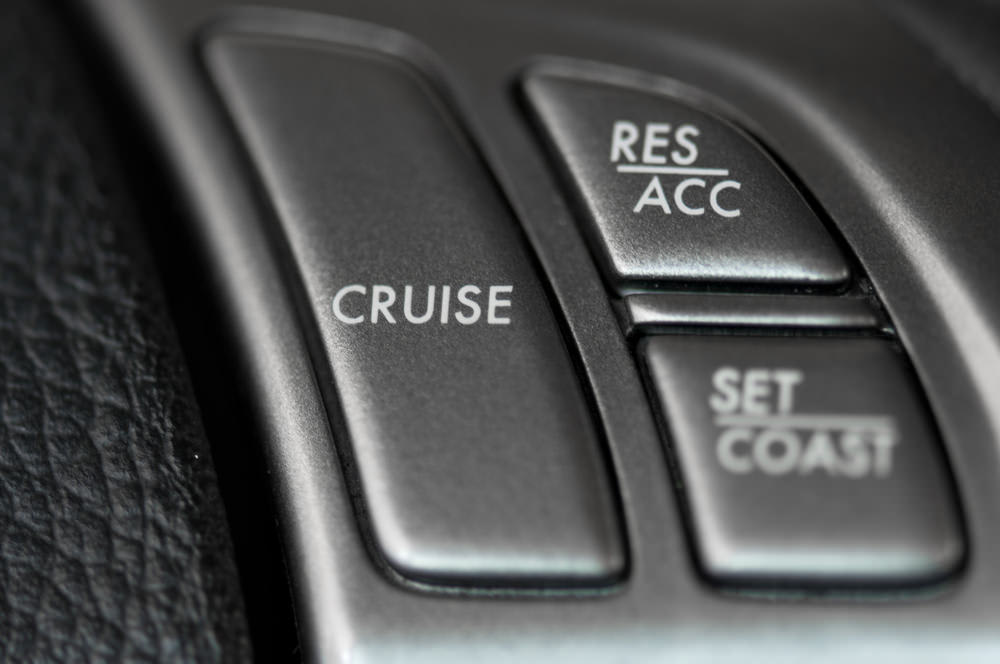

The flashing red and blue lights are behind you. All the traffic passing by you slows slightly and stares just a bit longer than usual. The officer walks up to your window, tears the page from his pad and hands it through the window. With an admonishment to drive slower, he tells you to have a nice day and leaves you staring at your speeding ticket. If only you had set your cruise control.
Benefits of cruise control
Although cruise control’s main purpose is to maintain a set speed, it does offer additional benefits that aren’t often considered. Cruise control:
- Reduces fuel consumption, saving you extra fuel costs
- Maintains a smooth, constant speed that helps eliminate motion sickness
- Allows you to focus on the road more as checking your speed isn’t required as frequently
- Avoids speeding tickets when the cruise is set to maintain the speed limit
How does cruise control function?
Several systems come into play for cruise control to function. The system is made up of the steering wheel controls, an input from a speed signal, an output to hold the speed steady, and an output to shut the system off.
The steering wheel controls on newer vehicles are mounted directly to the front of the steering wheel, while some older models had one of the column stalks with the cruise control buttons mounted on it, like the turn signal lever. The main buttons are set, coast, accelerate, cancel, on, and off, and some new cars have maximum and minimum speed buttons as well.
Set: At speeds of 30 miles per hour or higher, pressing Set will maintain the current speed, allowing you to take your foot off the accelerator.
Coast: Tapping the Coast button will reduce your speed one mile per hour at a time, while pressing and holding it will cause your car to decelerate until you release the button.
Accelerate: Tapping Accelerate will bump your speed up a half-mile or mile per hour for each tap, while pressing and holding will cause your car to accelerate until the button is released. It also functions to resume the last cruise control speed you had set on the same ignition cycle.
Cancel: Pressing Cancel will turn off the current set speed and return the speed control to manual operation.
Off: This button turns the system off so the cruise control cannot be set. It’s best to turn cruise control off in situations that it may not be safe to use, such as icy road conditions.
On: The On button enables cruise control to be used.
How to cancel cruise control
Cruise control can be cancelled three ways so you can decelerate or control the speed yourself. You can press the cancel button to resume manual operation. You can press the off button to turn the system off. You can also press the brake pedal. Pressing the brake pedal sends a signal to the cruise control system that is the same as pressing the cancel button.
Common cruise control failures
Surprisingly, the most common "failure" is the system being turned off. If the cruise control is not operating for you, check that you haven’t turned it off.
A burnt out brake light can cause the cruise control to not set. Since a signal from the brake pedal can cancel the cruise control, it would not be feasible for the cruise to be able to set if the brake light couldn’t signal cruise control to turn off.
If the cruise control can’t detect a speed signal, the cruise control will not set. In many cases, the speedometer will not function correctly due to the same fault. If you notice any kind of issue with your cruise control, contact a mechanic before you head out on your next long drive.



